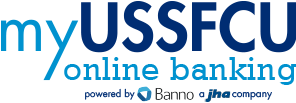How to Set Financial Goals
Published: February 3, 2021

Setting specific savings goals will help you to begin saving money.
When you are just putting money into the bank on a regular basis, it can be easier to withdraw it for various reasons. You can easily overspend and use some of the money you had earmarked for savings. For these reasons, it is important to save for a specific target or goal. You may be working toward several objectives at once, or you may be focused on one specific goal that you want to meet.
Choose a Specific Savings Goal
You need to determine what you are saving money for. Your savings goal may be for a down payment on your home. You may be saving for a dream vacation or to pay for your next car. You may be saving for retirement or for an emergency fund. You may be saving for all of these reasons.
Once you know what you are saving for, then you need to determine how much you need in order to reach each goal.
Create a Savings Timeline
When you have the savings goal and the amount that you need to save, it helps to set a timeline to reach your goal. This will give you additional motivation to actively work toward your savings goals.
Some timelines are simple. For example, you may want to go on vacation in a year or have the down payment for your house ready in two years. For other goals, such as saving for retirement or an emergency fund, you may want to set benchmarks and dates that you want to reach these benchmarks. For example, you may determine that you want to have $50,000 in your retirement savings account by the time you reach age 30.
Learn how to set aside money for emergency expenses >>
Set Monthly Goals
In order to reach your timeline for your savings goal, you need to determine how much you need to save each month. This should be pretty straightforward for most of your goals, but your retirement account will have to be calculated to account for both your contributions and the rate of return that will be added to it as it grows. A financial advisor can help you with this, as can many online calculators.
Find Extra Money in Your Monthly Budget
Tally up all of your monthly savings goals into a lump sum. You will need to find that amount of money in your budget. You should set this up so that it happens automatically, before you even have a chance to spend the money on something else. Some companies will direct deposit part of your check into a savings account or you can have your bank automatically draft that amount into a savings account every payday.
Use the Right Savings Tool
You should also find the right type of account for your savings goal. If you are looking at saving money for longer than five years, consider mutual funds. You may also want to open a high-yield savings account to earn more interest on your savings balance every month.
Money market accounts through your bank or credit union often offer good rates of return. In the past, certificates of deposit (CDs) have offered good rates of return, but you should compare them to other accounts. Most of these options will offer a lower rate of return than other investments such as mutual funds, exchange-traded funds, and equities, which have historically garnered larger annual returns.
For more information on mutual fund investing contact our partners at Fellows Financial Group.
You do not want to put an emergency fund into a CD or other account that is locked from withdrawals. You can be penalized if you need to access the money before the term is complete. Savings bonds do not offer an option that will help you reach your goals quickly, either.1+2
Whichever savings vehicle you pick, set up monthly automatic transfers to make moving the money around easy. Just be sure to have enough to cover each monthly savings goal so that you don't overdraft your account.
Track Your Goals
If you are working toward more than one savings goal, you have several options available. You may choose to put all of the money into one account and simply keep a ledger at home of what amount goes to which goal. Or you may choose to have separate accounts for each of your savings goals.
For example, you may opt to have one savings account that is simply for your emergency fund, and another account that you use to save for a home or vacation. This will help to protect the money that you are saving for those individual goals so that you aren't tempted to tap into one area of savings, like your emergency fund, as often.
It's always helpful to reward yourself as you reach some basic milestones along the way. This can help you stay motivated to keep on track on the way toward your larger savings goals.
Sources: 1. Vanguard. "Broaden Your Portfolio With CDs & Bonds." Accessed June 25, 2020. 2. Investor.gov. "Mutual Funds." Accessed June 25, 2020.
This content is meant to provide general consumer information and contains links to third-party websites. USSFCU is not responsible for the accuracy, security, or content of other websites. In addition, the third-party information is not intended to provide tax, legal, real estate, or investment advice.
This article originally appeared on thebalance.com.



